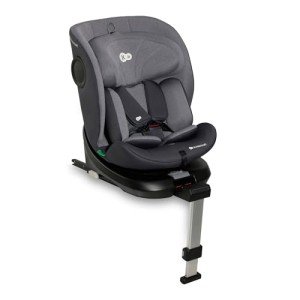Pram or Pushchair: A Comprehensive Guide for New Parents
Selecting the right mode of transport for children is one of the very first considerable decisions brand-new parents deal with. With Top Rated Pushchairs UK on the marketplace, the debate between prams and pushchairs can be overwelming. This short article will provide comprehensive insights into the differences between prams and pushchairs, their requirements, advantages and drawbacks, and what to consider before making a purchase.
Understanding Prams and Pushchairs
At its core, the choice in between a pram and a pushchair lies in their design and meant usage.
Definitions:
- Pram: A pram, brief for "perambulator," is designed mainly for newborns. It includes a flat, carrycot-style seat that permits the baby to lie down completely flat. Prams are typically more luxurious and are meant for transporting infants who are not yet staying up individually.
- Pushchair: A pushchair, likewise referred to as a stroller, is designed for older infants and young children who can stay up. Pushchairs usually have an upright seat and may not recline totally flat, although many models now offer adjustable reclining choices for comfort.
Key Differences:
| Feature | Pram | Pushchair |
|---|---|---|
| Age of Use | Newborn to about 6 months | 6 months to 4 years or more |
| Seating Position | Flat, lying down | Upright or a little reclined |
| Weight | Usually much heavier | Generally lighter |
| Mobility | Less portable due to weight | More portable and easier to fold |
| Use Case | Brief walks, leisurely walks | Daily use, errands, longer trips |
Advantages and Disadvantages
Pram
Advantages:
- Comfort for Newborns: Provides a flat surface conducive to a newborn's developmental needs.
- Stylish Designs: Many prams featured classy designs, providing a touch of luxury.
- Storage Space: Sometimes include larger storage choices listed below.
Drawbacks:
- Weight: Generally heavier and bulkier than pushchairs.
- Limited Usage: Suitable just for newborns and babies who can not stay up.
Pushchair
Advantages:
- Versatility: Suitable for older babies and toddlers, typically accommodating them for numerous years.
- Light-weight and Portable: Easier to fold and transport, making them perfect for hectic moms and dads.
- Configurable Options: Many pushchairs have adjustable seats and accessories for safety seat and carrycots.
Downsides:
- Comfort for Newborns: Not constantly ideal for infants in the early months without a correct insert.
- Less Luxurious: Often viewed as less elegant compared to prams.
Making the Right Choice
When it pertains to deciding between a pram and pushchair, numerous elements must be thought about:
1. Way of life:
- If parents often make long journeys or choose strolls, a pram might be preferential.
- If they require to navigate through city streets or take public transport, a lightweight pushchair might be better.
2. Budget plan:
Pricing can differ commonly. Comprehending your financial limits will help concentrate on options that satisfy both aesthetic and practical criteria.
3. Flexibility:
Some progressive solutions include travel systems that permit parents to transition from a safety seat to a pushchair with the exact same base, using maximum versatility.
4. Storage Space:
A pram may use up more room in a vehicle or in your home, while a pushchair's ability to fold down can be a significant advantage in tighter areas.
Frequently asked questions
Q1: Can I use a pushchair for newborns?
A1: Some pushchairs come with bassinet accessories or fully reclining seats, making them ideal for newborns. However, it's important to inspect the specifications before usage.
Q2: How do I pick the best model?
A2: Consider your lifestyle, spending plan, and the features you prioritize, such as weight, portability, and storage choices.
Q3: Are prams and pushchairs safe for my baby?
A3: Yes, both prams and pushchairs are created with safety features. Look for models with a 5-point harness, tough brakes, and safe frames.
Q4: How long can I utilize a pram for?
A4: A pram is generally suitable till a baby can stay up unassisted, typically around 6 months.
Q5: What are travel systems?
A5: Travel systems are combinations of a vehicle seat and a pushchair that work in tandem, enabling easy transitions from cars and truck to pushchair without requiring to get rid of the baby.
Picking in between a pram and a pushchair eventually comes down to the needs and way of life choices of each family. Prams offer convenience and style for infants, while pushchairs offer versatility and ease for older babies and toddlers. By carefully thinking about private scenarios and requirements, parents can make an informed choice that will guarantee safe and satisfying outings with their little ones.
In the end, whether one select a stylish pram or a useful pushchair, the main objective stays the same-- ensuring comfort and safety for the child while assisting in benefit for moms and dads.

